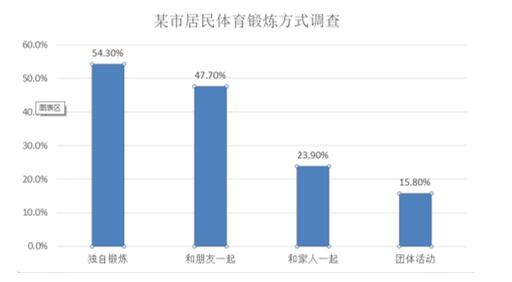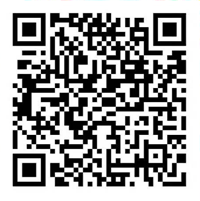Section Ⅰ Use of English
Directions: Read the following text. Choose the best word(s) for each numbered blank and mark A, B, C or D on the ANSWER SHEET. (10 points)
It's not difficult to set targets for staff. It is much harder, ___1___ to understand their negative harder, consequences. Most work-related behaviors have multiple components. ___2___ one and the others become distorted.
Travel on a London bus and you’ll ___3___ see how this works with drivers. Watch people get on and show their tickets. Are they carefully inspected? Never. Do people get on without paying? Of course! Are there inspectors to, ___4___ that people have paid? Possibly, but very few. And people who run for the bus? They are ___5___. How about jumping lights? Buses do so almost as frequently as cyclists.
Why? Because the target is ___6___. People complained that buses were late and infrequent. ___7___, the number of buses and bus lanes were increased, and drivers were ___8___ or punished according to the time they took. And drivers hit these targets. But they_ ___9___ hit cyclists. If the target was changed to ___10___ you would have more inspectors and more sensitive pricing. If the criterion changed to safety, you would get more ___11___ drivers who obeyed traffic laws. But both these criteria would be at the expense of time.
There is another ___12___: people became immensely inventive in hitting targets. Have you ___13___ that you can leave on a flight an hour late but still arrive on time? Tailwinds? Of course not! Airlines have simply changed the time a ___14___ is meant to take. A one-hour flight is now billed as a two-hour flight.
The ___15___ of the story is simple. Most jobs are multidimensional, with multiple criteria. Choose one criterion and you may well ___16___ others. Everything can be done faster and made cheaper, but there is a ___17___. Setting targets can and does have unforeseen negative consequences.
This is not an argument against target setting. But it is an argument for exploring consequences first. All good targets should have multiple criteria ___18___ critical factors such as time, money, quality and customer feedback. The trick is not only to ___19___ just one or even two dimensions of the objective, but also to understand how to help people better ___20___ the objective.
1.A. thereforeB. againC. moreoverD. however
2.A. identifyB. assess C. emphasizeD. explain
3.A. curiouslyB. quicklyC. eagerlyD. nearly
4.A. checkB. proveC. recallD. claim
5.A threatenedB mockedC. ignoredD. blamed
6.A. hospitalityB. competitionC. punctualityD. innovation
7.A. YetB. BesidesC. StillD. So
8.A. rewardedB. trainedC groupedD. hired
9.A. ratherB. alsoC. onceD. only
10.A comfortB. efficiencyC. securityD. revenue
11.A cautiousB. quietC. diligentD. friendly
12.A. purposeB prejudiceC. policyD. problem
13.A. revealedB noticedC. admittedD. reported
14.A. breakB. departureC. transferD. trip
15.A. backgroundB. moral C. styleD. form
16.A. sacrificeB. criticizeC. tolerateD. interpret
17.A. secretB. costC. productD. task
18.A. relating toB. calling forC. accounting forD. leading to
19.A. predictB restoreC. specifyD. create
20.A. reviewB. achieveC. presentD. modify
Section Ⅱ Reading Comprehension
Part A
Directions: Read the following four texts. Answer the questions below each text by choosing A, B, C or D. Mark your answers on the ANSWER SHEET. (40 points)
Text 1
"Reskilling" is something that sounds like a buzzword but is actually a requirement if we plan to have a future in which a lot of would-be workers do not get left behind.
We know we are moving into a period where the jobs in demand will change rapidly, as will the requirements of the jobs that remain. Research by the World Economic Forum finds that on average 42 percent of the "core skills" within job roles will change by 2022. That is a very short timeline.
The question of who should pay for reskilling is a thorny one. For individual companies, the temptation is always to let go of workers whose skills are no longer in demand and replace them with those whose skills are. That does not always happen. AT&T is often given as the gold standard of a company that decided to do massive reskilling program rather than go with a fire-and-hire strategy. Other companies had also pledged to create their own plans. When the skills mismatch is in the broader economy, though, the focus usually turns to government to handle. Efforts in Canada and elsewhere have been arguably languid at best, and have given us a situation where we frequently hear of employers begging for workers, even at times and in regions where unemployment is high.
With the pandemic, unemployment is very high indeed. In February.at 3.5 per cent and 5.5 per cent respectively, unemployment rates in Canada and the United States were at generational lows and worker shortages were everywhere. As of May, those rates had spiked up to 13.3 per cent and 13.7 per cent, and although many worker shortages had disappeared, not all had done so. In the medical field, to take an obvious example, the pandemic meant that there were still clear shortages of doctors, nurses and other medical personnel.
Of course, it is not like you can take an unemployed waiter and train him to be a doctor in a few weeks, no matter who pays for it. But even if you cannot close that gap, maybe you can close others, and doing so would be to the benefit of all concerned. That seems to be the case in Sweden, where the pandemic kick-started a retraining program where business as well as government had a role.
Reskilling in this way would be challenging in a North American context. You can easily imagine a chorus of "you can’t do that," because teachers or nurses or whoever have special skills, and using any support staff who has been quickly trained is bound to end in disaster. Maybe. Or maybe it is something that can work 'ell in Sweden, with its history of Co-operation between business, labor and government, but not in North America where our history is very different. Then again, maybe it is akin to wartime, when extraordinary things take place, but it is business as usual after the fact. And yet, as in war the pandemic is teaching us that many things, including rapid reskilling, can be done if there is a will to do them. In any case Sweden’s work force is now more skilled, in more things, and more flexible than it was before.
Of course, reskilling programs, whether for pandemic needs or the post pandemic world, are expensive and at a time when everyone’s budgets are lean this may not be the time to implement them. Then again, extending income support programs to get us through the next months is expensive, too, to say nothing of the cost of having a swath of long-term unemployed in the POST-COVID years. Given that, perhaps we should think hard about whether the pandemic can jump-start us to a place where reskilling becomes much more than a buzzword.
21.Research by the World Economic forum suggests_________.
A. an urgent demand for new job skills
B. an increase in full-time employment
C. a steady growth of job opportunities
D. a controversy about the "core skills"
22.AT&T is cited to show _________.
A. the characteristics of reskilling programs
B. the importance of staff appraisal standards
C. an immediate need for government support
D. an alternative to the fire-and-hire strategy
23.Efforts to resolve the skills mismatch in Canada_________.
A. have proved to be inconsistent
B. have driven up labor costs
C. have appeared to be insufficient
D. have met with fierce opposition
24.We can learn from Paragraph 3 that there was__________.
A. a sign of economic recovery
B. a call for policy adjustment
C. a change in hiring practices
D. a lack of medical workers
25.Scandinavian Airlines decided to __________.
A. create jobs vacancies for the unemployed
B. prepare their laid-off workers for other jobs
C. retrain their cabin staff for better services
D. finance their staff's college education
Text 2
With the global population predicted to hit close to 10 billion by 2050, and forecasts that agricultural production in, some regions will need to nearly double to keep pace, food security is increasingly making headlines. In the UK, it has become a big talking point recently too, for rather particular reason: Brexit.
Brexit is seen by some as an opportunity to reverse a recent trend towards the UK importing food. The country produces only about 60 percent of the food it eats, down from almost three-quarters in the late 1980s. A move back to self-sufficiency, the argument goes, would boost the farming industry, political sovereignty and even the nation’s health. Sounds great—but bow feasible is this vision?
According to a report on UK food production from the University of Leeds, UK, 85 per cent of the country's total land area is associated with meat and dairy production. That supplies 80 per cent of what is consumed, so even covering the whole country in livestock farms wouldn't allow us to cover all our meat and dairy needs.
There are many caveats to those figures, but they are still grave. To become much more self-sufficient, the UK would need to drastically reduce its consumption of animal foods, and probably also farm more intensively—meaning fewer green fields, and more factory-style production.
But switching to a mainly plant-based diet wouldn't help. There is a good reason why the UK is dominated by animal husbandry: most of its terrain doesn't have the right soil or climate to grow crops on a commercial basis. Just 25 percent of the county's land is suitable for crop-growing, most of which is already occupied by arable fields. Even if we converted all the suitable land to fields of fruit and veg—which would involve taking out all the nature reserves and removing thousands of people from their homes—we would achieve only a 30 percent boost in crop production.
Just 23 percent of the fruit and vegetables consumed in the UK are currently home-grown, so even with the most extreme measures we could meet only 30 percent of our fresh produce needs. That is before we look for the space to grow the grains, sugars, seeds and oils that provide us with the vast bulk of our current calorie intake.
26.Some people argue that food self-sufficient in UK would_________.
A. be hindered by its population ground
B. become a priority of government
C. pose a challenge to its farming industry
D. contribute to the nation's well-being
27.The report by the University of Leeds shows that in the UK_________.
A. farmland has been inefficiently utilized
B. factory-style production needs reforming
C. most land is used for meat and dairy production
D. more green fields will be converted for farming
28.Crop-growing in the UK is restricted due to__________.
A. its farming technology
B. its dietary tradition
C. its natural conditions
D. its commercial interests
29.It can be learned from the last paragraph that British people__________.
A. rely largely on imports for fresh produce
B. enjoy a steady rise in fruit consumption
C. are seeking effective ways to cut caloorie intake
D. are trying to grow new varieties of grains
30.The author's attitude to food self-sufficient in the UK is__________.
A. defensive B. doubtful C. tolerant D. optimistic
Text 3
When Microsoft bought task management app Wunderlist and mobile calendar Sunrise in2015, it picked up two newcomers that were attracting considerable buzz in Silicon Valley. Microsoft's own Office dominates the market for "productivity" software, but the start-ups represented a new wave of technology designed from the ground up for the smartphone world.
Both apps, however, were later scrapped after Microsoft said it had used their best features in its own products. Their teams of engineers stayed on, making them two of the many acqui-hires" that the biggest companies have used to feed their insatiable hunger for tech talent.
To Microsoft's critics, the fates of Wunderlist and Sunrise are examples of a remorseless drive by Big Tech to chew up any innovative companies that lie in their path. "They bought the seedlings and closed them down," complained Paul Arnold, a partner at San Francisco-based Switch Ventures, putting paid to businesses that might one day turn into competitors. Microsoft declined to comment.
Like other start-up investors, Mr Arnold’s own business often depends on selling start-ups to larger tech companies, though he admits to mixed feelings about the result: “I think these things are good for me, if I put my selfish hat on. But are they good for the American economy? I don't know”
The US Federal Trade Commission says it wants to find the answer to that question. This week, it asked the five most valuable US tech companies for information about their many small acquisitions over the past decade. Although only a research project at this stage, the request has raised the prospect of regulators wading into early-stage tech markets that until now have been beyond their reach.
Given their combined market value of more than 5.5tn dollars, rifling through such small deals -many of them much less prominent than Wunderlist and Sunrise might seem beside the point. Between them, the five companies (Apple, Microsoft, Google, Amazon and Facebook) have spent an average of only 3.4bn dollars a year on sub-1bn dollars acquisitions over the past five years a drop in the ocean compared with their massive financial reserves, and the more than$130bn of venture capital that was invested in the US last year.
However, critics say that the big companies use such deals to buy their most threatening potential competitors before their businesses have a chance to gain momentum, in some cases as part of a “buy and kill” tactic to simply close them down.
31.What is true about Wunderlist and Sunrise after their acquisitions?
A. Their market values declined B. Their engineers were retained
C. Their tech features improved D. Their products were re-priced
32.Microsoft's critics believe that the big tech companies tend to __________.
A. exaggerate their product quality
B. treat new tech talent unfairly
C. eliminate their potential competitions
D. ignore public opinions
33.Paul Arnold is concerned that small acquisitions might__________.
A. harm the national economy
B. worse market competition
C. discourage start up investors
D. weaken big tech companies
34.The US Federal Trade Commission intends to__________.
A. supervise start-up's operations
B. encourage research collaboration
C. limit Big Tech's expansion
D. examine small acquisitions
35.For the five biggest tech companies, their small acquisitions have_________.
A. raised few management challenges
B. brought little financial pressure
C. set an example for future deals
D. generated considerable profits
Text 4
We’re fairly good at judging people based on first impressions, thin slices of experience ranging from a glimpse of a photo to five-minute interaction, and deliberation can be not only extraneous but intrusive. In one study of the ability she dubbed "thin slicing,” the late psychologist Nalini Ambady asked participants to watch silent 10-second video clips of professors and to rate the instructor’s overall effectiveness. Their ratings correlated strongly with students end-of-semester ratings. Another set of participants had to count backward from 1,000 by nines as they watched the clips, occupying their conscious working memory. Their ratings were just as accurate, demonstrating the intuitive nature of the social processing.
Critically, another group was asked to spend a minute writing down reasons for their judgment, before giving the rating. Accuracy dropped dramatically. Ambady suspected that deliberation focused them on vivid but misleading cues, such as certain gestures of utterances, rather than letting the complex interplay of subtle signals form a holistic impression. She found similar interference when participants watched 15-second clips of pairs of people and judged whether they were strangers, friends, or dating partners.
Other research shows we 're better at detecting deception and sexual orientation from thin slices when we rely on intuition instead of reflection. "It' s as if you' re driving a stick shift," says Judith Hall, a psychologist at Northeastern University, " and if you start thinking about it too much, you can' t remember what you' re doing. But if you go on automatic pilot, you re fine. Much of our social life is like that."
Thinking too much can also harm our ability to form preferences. College students’ ratings of strawberry jams and college courses aligned better with experts' opinions when the students weren’t asked to analyze their rationale. And people made car-buying decisions that were both objectively better and more personally satisfying when asked to focus on their feelings rather than on details, but only if the decision was complex — when they had a lot of information to process.
Intuition’s special powers are unleashed only in certain circumstances. In one study, participants completed a battery of eight tasks, including four that tapped reflective thinking (discerning rules comprehending vocabulary) and four that tapped intuition and creativity (generating new products or figures of speech). Then they rated the degree to which they had used intuition ("gut feelings," "hunches," "my heart"). Use of their gut hurt their performance on the first four tasks, as expected, and helped them on the rest. Sometimes the heart is smarter than the head.
36.Nalini Ambaby's study deals with__________.
A. instructor-student interaction
B. the power of people's memory
C. the reliability of first impressions
D. people's ability to influence others
37.In Ambaby's study, rating accuracy dropped when participants
A. focused on specific details
B. discussed with one another
C. watched shorter video clips
D. gave the rating in limited time
38.Judith Hall mentions driving to mention that___________.
A. memory can be selective
B. reflection can be distracting
C. social skills must be cultivated
D. deception is difficult to detect
39.When you are making complex decisions, it is advisable to__________.
A. follow your feelings
B. list your preferences
C. seek expert advice
D. collect enough data
40.What can we learn from the last paragraph?
A. Generating new products takes time
B. Objective thinking may boost intuitiveness
C. Vocabulary comprehension needs creativity
D. Intuition may affect reflective tasks
Part B
Directions: Read the following text and answer the questions by choosing the most suitable subtitle from the list A-G for each of the numbered paragraphs (41-45). There are two extra subtitles which you do not need to use. Mark your answers on the ANSWER SHEET. (10 points)
A. Stay calm
B. Stay humble
C. Don't make judgments
D. Be realistic about the risks
E. Decide whether to wait
F. Ask permission to disagree
G. Identify a shared goal
How to Disagree with Someone More Powerful than You
Your boss proposes a new initiative you think won't work. Your senior colleague outlines a project timeline you think is unrealistic. What do you say when you disagree with someone who has more power than you do? How do you decide whether it's, worth speaking up? And if you do, what exactly should you say? Here's how to disagree with someone more powerful than you.
41._________________________________
You may decide it's best to hold off on voicing your opinion. Maybe you haven't finished thinking the problem through, the whole discussion was a surprise to you, or you want to get a clearer sense of what the group thinks. If you think other people are going to disagree too, you might want to gather your army first. People can contribute experience or information to your thinking — all the things that would make the disagreement stronger or more valid. It's also a good, idea to delay the conversation if you are in a meeting or other public space. Discussing the issue in private will make the powerful person feel less threatened.
42.__________________________________
Before you share your thoughts, think about what the powerful person cares about —it may be “the credibility of their team on getting a project done on time,” says Grenny. You're more likely to be heard if you can connect your disagreement to a higher purpose.” When you do speak up, don't assume the link will be clear. You'll want to state it overtly, contextualizing your statements so that you're seen not as a disagreeable underling but as a colleague who's trying to advance a shared goal. The discussion will then become more like a chess game than a boxing match.
43.__________________________________
This step may sound overly deferential, but it's a smart way to give the powerful person psychological safety and control. You can say something like, “I know we seem to be moving toward a first-quarter commitment here. I have reasons to think that won't work. I'd like to lay out my reasoning. Would that be OK?” This gives the person a choice, allowing them to verbally opt in, says Grenny. And, assuming they say yes, it will make you feel more confident about voicing your disagreement.
44.___________________________________
You might feel your heart racing or your face turning red, but do whatever you can to remain neutral in both your words and actions. When your body language communicates reluctance or anxiety, it undercuts the message. It sends a mixed message, and your counterpart gets to choose what to read, she explains. Deep breaths can help, as can speaking more slowly and deliberately. When we feel panicky, we tend to talk louder and faster. Simply slowing the pace and talking in an even tone helps the other person calm down and does the same for you. It also makes you seem confident, even if you aren't.
45.___________________________________
Emphasize that you’re offering your opinion, not gospel truth. “It may be a well-informed, well-researched opinion, but it's still an opinion, so talk tentatively and slightly understate your confidence. Instead of saying something like, “If we set an end-of-quarter deadline, we'll never make it,” say, “This is just my opinion, but I don’t see how we will make that deadline.” Having asserted your position, “demonstrate equal curiosity about other views," says Grenny. Remind the person that this is your point of view," and then invite critique. Be genuinely open to hearing other opinions.
Section Ⅲ Translation
Directions: In this section there is a text in English. Translate it into Chinese, write your translation on ANSWER SHEET 2. (15 points)
We tend to think that friends and family members are our biggest sources of connection, laughter and warmth. While that may well be true, researchers have also recently found that interacting with strangers actually brings a boost in mood and feelings of belong that we didn't expect.
In our series of studies, researchers instructed Chicago area commuters using public transportation to strike up а conversation with someone near them. On average, participants who followed the instruction felt better than those who had been told to stand or sit in silence. The researchers also argued that when we shy away from casual interaction with strangers, it is often due to a misplaced anxiety that they might not want to talk to us. Much of the time, however, this belief is false. As it turns out, many people are actually perfectly willing to talk and may even be flattered to receive your attention.
Section Ⅳ Writing
Part A
47. Directions:
Suppose you are organizing an online meeting. Writing an email to Jack, an international student, to
1)invite him to participate, and
2)tell him the details.
You should write about 100 words on ANSWER SHETE.
Do not sign your own name at the end of the letter. Use “Zhang Wei” instead.
Do not write the address. (10 points)
Part B
48. Directions:
Write an essay based on the chart below. In your writing, you should
1) interpret the chart, and
2) give your comments
You should write about 150 words on the ANSWER SHEET. (15 points)
















